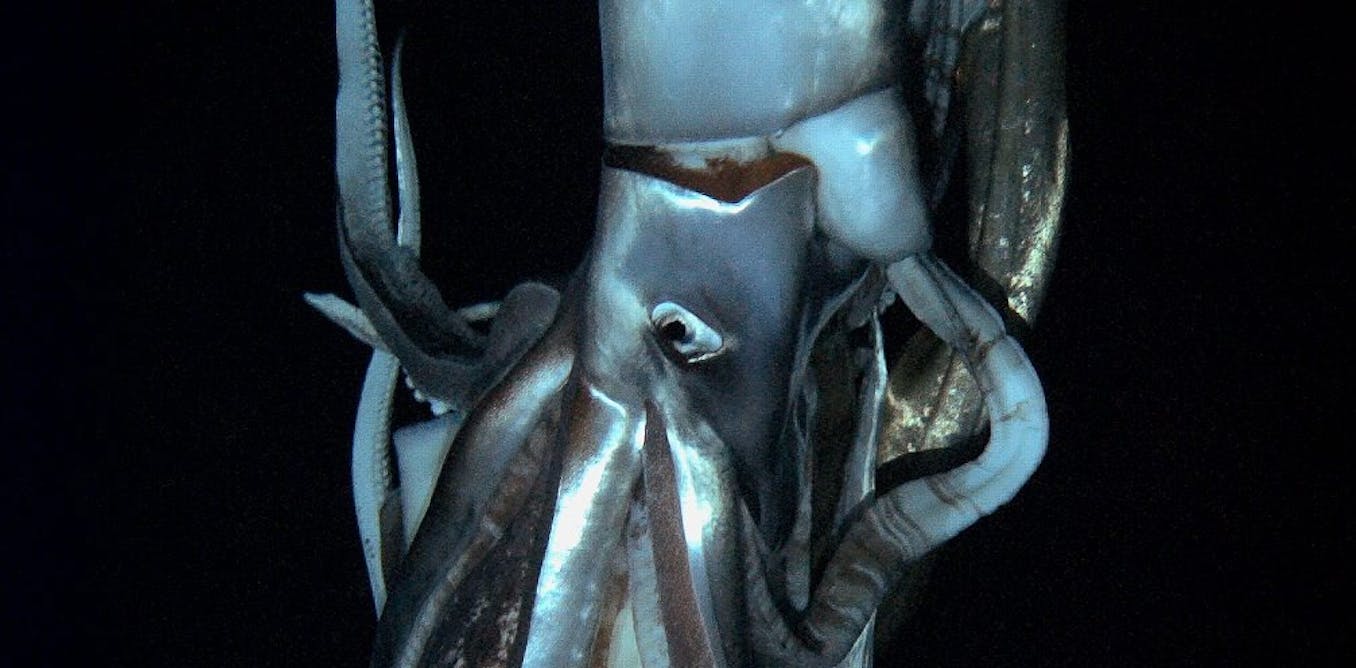Bigfoot, the kraken and night parrots: searching for the mythical or mysterious
Bigfoot, the kraken and night parrots: searching for the mythical or mysterious"
- Select a language for the TTS:
- UK English Female
- UK English Male
- US English Female
- US English Male
- Australian Female
- Australian Male
- Language selected: (auto detect) - EN
Play all audios:
It’s remarkable how little we know about Earth. How many species do we share this planet with? We don’t know, but estimates vary from millions to a trillion. In some respects we know more
about the Moon, Mars and Venus than we do about the ocean’s depths and the vast sea floors. But humans are inquisitive creatures, and we’re driven to explore. Chasing mythical or mysterious
animals grabs media headlines and spurs debates, but it can also lead to remarkable discoveries. The recent photographing of a live night parrot in Western Australia brought much joy. These
enigmatic nocturnal birds have been only sporadically sighted over decades. Another Australian species that inspires dedicated searchers is the Tasmanian tiger, or thylacine. A new hunt is
under way, not in Tasmania but in Queensland’s vast wilderness region of Cape York. Other plans are afoot to search for the long-beaked echidna in Western Australia’s Kimberley region. In
the case of the thylacine, old accounts from the region that sound very much like descriptions of the species raise the prospect that perhaps Cape York isn’t such a bad place to look after
all. But in reality, and tragically, it’s very unlikely that either of these species still survives in Australia. For some species there is scientific research that estimates just how
improbable such an event would be; in the case of thylacines, one model suggests the odds are 1 in 1.6 trillion. CHASING MYTHS The study and pursuit of “hidden” animals, thought to be
extinct or fictitious, is often called cryptozoology. The word itself invites scorn – notorious examples include the search for Bigfoot, the Loch Ness Monster or Victoria’s legendary black
panthers. Granted, it’s probably apt to describe those searches as wild goose chases, but we must also acknowledge that genuine species – often quite sizeable ones – have been discovered.
Remarkable discoveries of animals thought to be fantasies or long extinct include giant squid, mountain gorillas, okapi, Komodo dragons and coelacanths. In some cases, like the giant squid,
these animals have been dismissed as legends. The reclusive oarfish, for example, are thought to be the inspiration for centuries of stories about sea serpents. TECHNOLOGY TO THE RESCUE
Finding rare and cryptic species is self-evidently challenging, but rapid advances in technology open up amazing possibilities. Camera traps now provide us with regular selfies of once
highly elusive snow leopards, and could equally be used with other difficult-to-find animals. Environmental DNA is allowing us to detect species otherwise difficult to observe. Animal DNA
found in the blood of leeches has uncovered rare and endangered mammals, meaning these and other much maligned blood-sucking parasites could be powerful biodiversity survey tools. Acoustic
recording devices can be left in areas for extended time periods, allowing us to eavesdrop on ecosystems and look out for sounds that might indicate otherwise hidden biological treasures.
And coupling drones with thermal sensors and high resolution cameras means we can now take an eagle eye to remote and challenging environments. THE BENEFITS OF EXPLORATION AND LESSONS
LEARNED It’s easy to criticise the pursuit of the unlikely, but “miracles” can and do occur, sometimes on our doorstep. The discovery of the ancient Wollemi pine is a case in point. Even if
we don’t find what we’re after, we may still benefit from what we learn along the way. I’ve often wondered how many more species might be revealed to us if scientists invested more time in
carefully listening to, recording and following up on the knowledge of Indigenous, farming, and other communities who have long and intimate associations with the land and sea. Such an
approach, combined with the deployment of new technologies, could create a boom of biological discovery.
Trending News
Drivers urged to pay car tax ahead of major ved changes next monthThe standard rate will increase by £10 for most cars which were first registered on or after April 1, 2017. For cars reg...
Wimbledon To Lose Familiar Face As Veteran BBC Presenter Sue Barker Calls Time After 30 YearsSue Barker at WimbledonBBC This year’s Wimbledon tennis tournament will see the end of an era. No, Roger Federer has not...
Let us now praise independent publishers | thearticleA few days ago, Pushkin Press was awarded the 2022 British Book Award for Independent Publisher of the Year. It was enti...
England scrum-half unavailable after he confirms move to new zealand for 2024 season - ruckWILLI HEINZ WILL TAKE THE FIELD FOR THE CRUSADERS IN THE 2024 SEASON, CONTINUING HIS STELLAR RETURN TO SUPER RUGBY. The...
Children's hospice launches trailblazing transition support role | nursing timesA charity that provides hospice care to seriously ill children in the North West of England is blazing a trail in the se...
Latests News
Bigfoot, the kraken and night parrots: searching for the mythical or mysteriousIt’s remarkable how little we know about Earth. How many species do we share this planet with? We don’t know, but estima...
Melissa McCarthy: ‘It’s Never Too Late’ — AARP2:48 Videos de AARP Melissa McCarthy: ‘It’s Never Too Late’ — AARP Facebook Twitter LinkedIn Melissa McCarthy gives us a...
404: This page could not be foundआरएसएसविज्ञापन र॓टहमार॓ साथ काम करेंहमारे बारे मेंसंपर्क करेंगोपनीयतासाइट जानकारीAdvertise with usAbout usCareers Privac...
Nature - volume 416 issue 6877, 14 march 2002ULTRACOLD MATTER New types of physical behaviour occur under unimaginably cold conditions, and modern laser-cooling tech...
Nature - volume 416 issue 6880, 4 april 2002WAVE TO THE SUN DREADCO engineers have been given the task of inventing 'Photofabric' — a flexible photoelectr...
